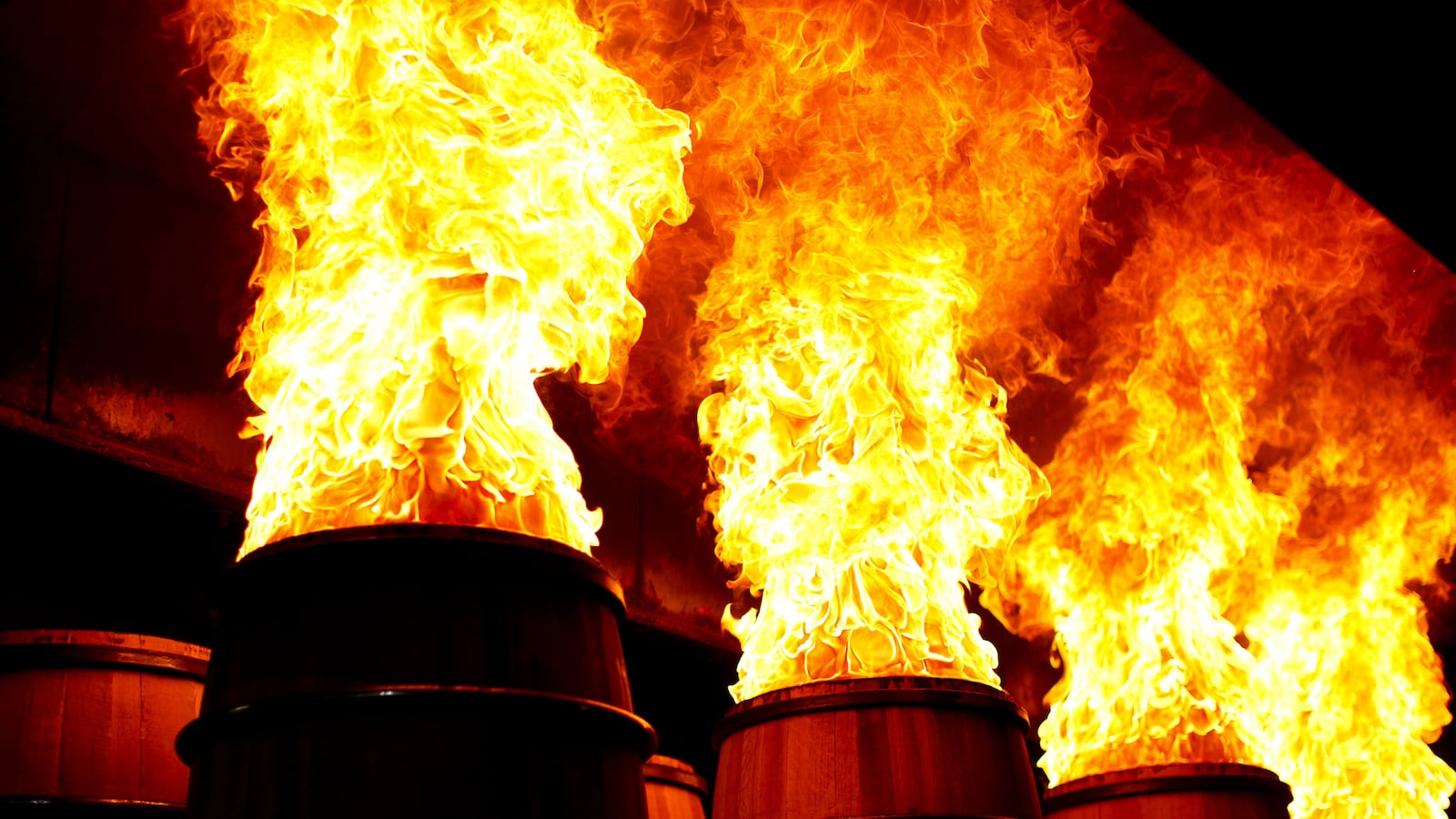The last place you might expect to discover a monument to American whiskey is in an overgrown field in the idyllic countryside of Speyside, Scotland.
But if you follow a path up a woody hill, overlooking the Glenrothes distillery, in a clearing you’ll find great pyramids of used American oak barrels.
The newest ones look like they could still hold whiskey, while the oldest, weather-beaten ones are losing their rusty hoops and the staves are turning into dust.

While this sight is surprising it’s not that unusual of a thing to find in Scotland. While every last drop of Scotch that is sold around the world needs to be distilled and aged in the country, what the whisky ages in usually comes from America.
Yes, a lot of Scotch is matured in old bourbon barrels and as a result there’s most likely some bourbon in your favorite drams.
The arrangement might seem odd at first, but it’s actually a perfectly balanced relationship. Bourbon (and also rye and wheat whiskies) can only be aged in a brand new oak barrel.
“Bourbon spits off a huge number of barrels they’re no longer interested in,” says Lew Bryson, former managing editor of the Whisky Advocate and author of Tasting Whiskey. “And Scotch is willing to take them.”
How many barrels are we talking about? Well, in 2014 there were more than 5.7 million barrels of bourbon aging in Kentucky alone and 1.3 million barrels were filled that year. And those robust figures don’t even take into account all the bourbon, Tennessee and rye whiskies aging outside of the Bluegrass State.
These casks, which are prized for their sweetness and vanilla notes, are then generally broken down, shrink wrapped and the majority are sent to Scotland but some also go to Mexico to be filled with tequila, to the Caribbean to be filled with rum and to Ireland and Canada to be filled with whiskey.

That’s not to mention all the breweries in America and Europe using the barrels to age a range of beers. Competition is so tight, brewers are “scrambling to find any barrel they can,” says Bryson. (Plus, there are companies like Bourbon Barrel Foods, which ages everything from vanilla extract and soy sauce to cocktail cherries in old barrels.)
“They literally go around the world,” says Chris Morris, the long-serving master distiller at Woodford Reserve and the chairman of the Kentucky Distillers’ Association. And they take with them a bit of whiskey, according to Morris, four to five percent of the alcohol in the barrel is soaked up by the wood.
This practice dates back decades to Depression-era America. In 1938, in an attempt to provide work for coopers and loggers the government mandated that bourbon could only be aged in a new barrel.
Morris is quick to point out that a number of brands already had this policy. “A good bourbon producer like Brown-Forman would never have reused a barrel even though it wasn’t required by law,” he says. Why? The more times the barrel is used, the less flavor it gives to a spirit and as result it would be hard to produce a consistent product.
The country was not only struggling to come out of the Depression but also dealing with adjusting to life after Prohibition. To address the pent-up demand, the whiskey industry furiously tried to ramp up production.
While the start of World War II halted the distillation of whiskey, brands continued to empty barrels of mature liquor.
As a result, after the war was over there was a huge surfeit of used barrels to be had. The Scotch and the Irish, who were also struggling to restart their whiskey industries, began buying American barrels.
“They find out that our bourbon barrels are wonderful and they become dependent on the US,” says Morris.
A real indicator of how the booze business is doing (and the overall economy for that matter) is the price of used bourbon barrels.

The higher the global demand for Irish, Canadian and Scottish whiskey as well as rum and tequila, the higher the price for used bourbon barrels. Now, according to Eddie Russell, Wild Turkey’s master distiller, a new barrel costs about $160 and used one is sold for between $60 and $70. About 15 years ago, when overall spirits consumption was lower the bourbon companies had a huge stockpile of barrels.
“We couldn’t give them away,” admits Morris. Brown-Forman, which in addition to Woodford also owns Jack Daniel’s, had to chip up thousands and thousands of barrels to sell for mulch.
At one point Wild Turkey was sitting on 30,000 empty barrels, which it couldn’t sell. Russell was having trouble even finding room to store them all.
Finally, a company bought them for a few dollars each to use them for flooring. It was a good thing because turning the barrels into flowerpots “was the only other option back in those days,” he says. “I don’t have any extra now.”






